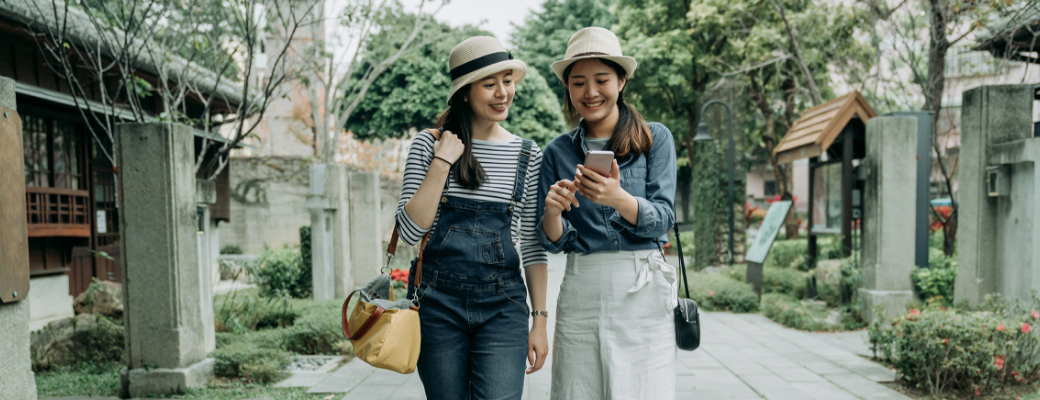
Digital Ticket
On sale: a set ticket including the Rapi:t , admission to the Tsutenkaku Observation Deck, and Nankai Soba!

Trip to Tokushima-Kansai with an eye to EXPO2025
It takes about three and a half hours from Kansai International Airport to Tokushima Port. Get in the train and go aboard the ferry.
Tokushima is a gold mine for adventure tourist. There is no shortage of culture- and nature-oriented activities, such as the Awa Odori dancing, indigo dyeing, Shikoku Pilgrimage and Naruto whirlpools. Also enjoy Tokushima specialty dishes. Getting reliable local buses, feel the charms of Tokushima, only here in Tokushima.
Experience the 400-year-old Awa Odori dancing. Drop in at any time without reservations.
The Awa Odori festival is arguably Tokushima’s most well-known and well-loved cultural event. This 400 year old dancing festival his held around the Obon holiday, where participants dress in traditional clothing, play music and dance through the streets. Though the Awa Odori only lasts a few days in August, here at The Awa Odori Kaikan (museum) you can experience the festival all year round with performances several times a day. Not only can you dig a little deeper into the artistry and cultural history of the festival but smiling local performers will also guide you in the simple steps!
Watch enjoyably the dramatic puppet play, a combination of puppetry and music with masterfulness.
The Tokushima Prefectural Awa Jurobe Yashiki is a theatre and museum dedicated to puppet theatre. This form of theatre, whilst similar to Bunraku, is an entirely unique regional art and as such has been designated as a nationally important intangible folk-culture asset. Awa Ningyo Joruri combines dramatic storytelling, puppetry and the music of the Shamisen to create a wonderful performance. This traditional Tokushima art uses large glossy puppets which are engaging and dynamic to watch on stage. Here at the Tokushima Prefectural Awa Jurobe, you can enjoy a performance set in an idyllic Japanese house, then check out the exhibition space to learn about the deep connection between puppetry and Tokushima.
Spectacular scene depicted also in ukiyoe woodblock prints. Swirling sea, only here in the world, watched from the sightseeing boat.
The Naruto Straight connects Tokushima to Awaji Island, and its current is the fastest in Japan, creating a spectacular series of whirlpools which can be up to 20 meters wide. The Whirlpool Sightseeing boat allows you to experience the whirlpools on an intimate level. There are two types of boat; the slow and smooth ‘Wonder Naruto’ and the smaller ‘Aqua Eddy’, which features an underwater observatory. The mesmerizing whirlpools, or Uzumaki, have become ingrained in Japanese culture as world famous ‘Naruto Uzumaki’ was named after this exhilarating natural phenomenon. This is one of the only places in the world where you can get so close to such impressive whirlpools on large sightseeing boats.
The starting point for religious pilgrimage, challenged also by foreigners. Popular as a pedestrian trail too.
It is said that by visiting a eighty-eight sacred sites in Shikoku that is about 1,460 kilometers in total, the 88 earthly desires of human beings disappear and hope comes true. It takes about 6 weeks for Ryozen-ji to become a "temple of hope" and to complete this pilgrimage related to Kukai, the founder of Shingon sect, on foot. Often used as the first and last stop on this pilgrimage, this temple is a great place to pray for a safe journey and to pick up traditional white robes, walking sticks and good luck talismans for the arduous path ahead.
Make another memory for yourself by trying indigo dyeing with the sustainable 100% natural dyestuff “Awa Ai”.
The mighty river Yoshino running in Tokushima Prefecture frequently flooded and provided a fertile ground for indigo plant. Since over 400 years ago, the quality indigo produced there was called “Awa Ai” and took the Japanese market by storm and brought enormous wealth. This indigo received enthusiastic reviews from a foreigner who visited Japan more than 130 years ago, saying “Japan is full of mystic blue.” In other words, indigo dyeing became widespread in the lifestyle of Japanese.
Recently the naturally derived indigo dyestuff is used and attracts attention from the fashion industry as a sustainable fabric.
In Tokushima, there are many facilities to get hands-on experience with indigo dyeing. Among others, the Ai-no-Yakata workshop provides not just for indigo dyeing experience. This museum also has the Ai-Yashiki compound and exhibit room to learn about the history and culture of Awa Ai indigo.
Walking along the mossy mountain stream and looking at lots of waterfalls on the way, you will see the must-see spot, two magnificent waterfalls.
Amagoi Waterfalls are called the Couple Waterfalls because there is a Husband and Wife set of falls. On the right side, the Wife stands in three steps at 45 meters tall, while at left the Husband stands vertically at 27 meters. It is considered one of the top 100 best Japanese waterfalls. Taking a short hike toward this falls, you pass through a few other high spots; Uguisu Falls, Fudo Falls, Jigoku-no-Fuchi, Momiji Falls, Kannon Falls, etc. Each waterfall basin is easily accessible and good for breaks and playing with water. After about 20-minute walk along the trail, you will find the big scale of the Amagoi Falls that appears suddenly from behind a rock. “Ooh and aah!” over the landscape. As a popular destination for hikers, lots of people visit this place. There are some slippery slopes. You are supposed to wear hiking boots.

